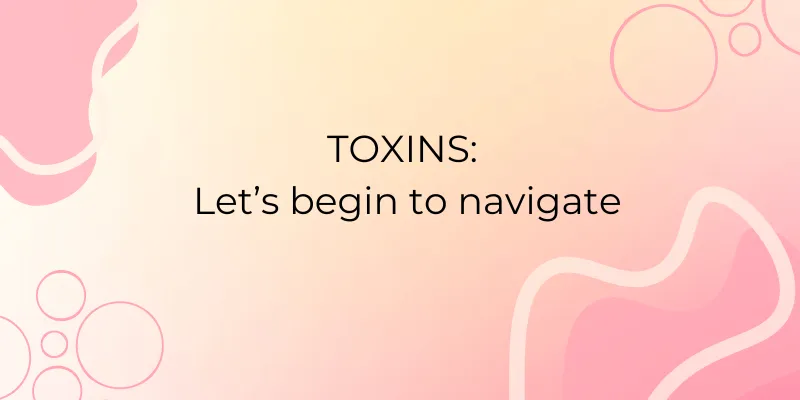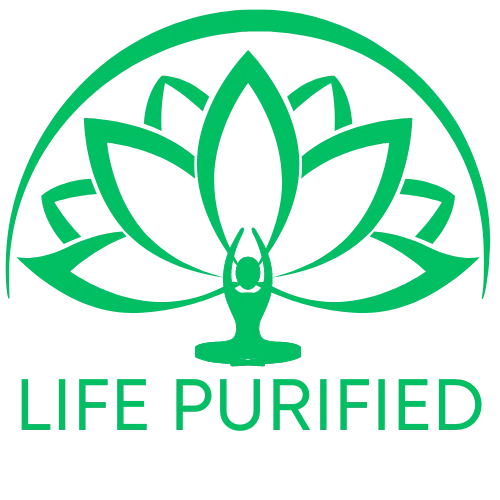Welcome To Our Blog!

Toxins: Let's begin to navigate
In today's modern world, toxins are an unavoidable part of life. They are found everywhere from the food we eat to the products we use and even in the air we breathe.
Understanding the nature of these toxins, how our bodies, particularly the liver, deal with them, and how we can minimize our exposure is crucial for maintaining optimal health.
What do we mean by toxins?
Toxins and volatile organic compounds (VOC’s) are man-made chemicals found in indoor environments.
Many associate the word ‘chemical’ with use in industrial processes or farming practices, like solvents or pesticides. However, the reality is that our everyday household and personal care products contain countless chemicals, many with known adverse health risks. The following are just a few examples of sources where we might be exposed to toxins: laundry detergents, cleaning products, fabric softeners, perfumes, air fresheners, cookware, building materials and plastics!
How does the body detoxify?
Our body naturally performs detoxification processes to remove the toxins we are exposed to through various systems, including the liver, kidneys, lungs and sweat.
The liver is our primary detoxification organ, processing toxins in two key phases to break them down into harmless substances that can be excreted from the body.
The first phase involves using liver enzymes to convert fat-soluble toxins into less harmful substances. Free radicals can be produced here which need further processing to prevent cellular damage.
The second phase involves attaching these substances to molecules like amino-acids, glutathione or sulphates, making them water soluble and easier to excrete through urine or bile.
However, when a toxin cannot be processed properly through these pathways for excretion, the body will often store it in adipose (fat) tissue as a way to protect the organs.
Supporting detoxification
Besides reducing our exposure to toxins which will be discussed further on, we can support our natural detoxification processes by:
Keeping well hydrated is essential for efficient kidney function to flush out toxins.
Exercising and performing activities that promote circulation and sweating to help eliminate toxins.
Maintaining a healthy gut microbiome by eating probiotic-rich foods such as fermented vegetables and yogurt helps to support detoxification processes.
Reducing alcohol intake to prevent the liver from becoming overloaded and damaged.
Effects of toxins on the body
When the body is unable to detoxify properly, the resulting accumulation of toxins in the body - known as toxic load -can lead to various health issues and symptoms.
Unfortunately, the regulation of chemicals is grossly inadequate because it does not account for the repeated, low-level exposure to a multitude of chemicals on a daily basis and instead considers the toxicity of each chemical in isolation. It also ignores the highly individual toxic load ‘threshold’ and susceptibility of each person, influenced by factors such as the timing of exposure (e.g. fetal exposure in the womb), age, genetic predisposition (as genes can alter detoxification pathways) and gut microbiome.
Signs of toxin overload:
Chronic illness
Cognitive impairment (concentration difficulties, memory problems and brain fog)
Digestive/Gut issues (such as bloating or constipation)
Skin disorders (rashes, hives, eczema)
Immune dysfunction
Hormone imbalances
Muscular and joint pain
Respiratory issues
The list of diseases linked to toxin exposure is extensive and includes asthma, allergies, diabetes, cancer and neurodegenerative conditions such as Alzheimer's.
Reducing exposure
Deciding to lower your toxin exposure can feel overwhelming at first, so it’s important to remember that living completely toxin-free is impossible. Focus on making one swap at a time and understand that sometimes it’s about choosing the ‘best’ option available to you in that moment. Don’t dwell on past choices you’ve made either; as the saying goes “when you know better, you do better”.
As you begin making these changes, it’s important to be aware of the ‘greenwashing’ tactics companies use to mislead consumers into thinking a product is ‘natural’ or ‘organic’ despite containing questionable ingredients. These terms do not always align with our low-tox standards, so learning to read labels and utilizing helpful apps such as the Chemical Maze, can help prevent being caught out by such practices.
Where to begin?
Listing all the potentially harmful ingredients would fill a book! So here are 3 of the most commonly found toxins to avoid as you begin this journey.
Phthalates
Phthalates are a group of chemicals used in plastics to make them more flexible and bendy. This includes everything from vinyl flooring, adhesives, plastic packaging and even toys! They can also be used in personal care products, such as shampoos and perfumes as they help fragrances ‘stick’ to the body and are also found in ‘fake-smelling’ products such as air fresheners and candles.
As a known endocrine disruptor, meaning they can interfere with the body’s hormonal systems, they have been linked to various health issues including fertility problems, reduced male sperm count and asthma, particularly in children. Fortunately, the compounds tend to be easily removed by the body so by reducing our incidental exposure to them, we help ease the daily detoxification burden they place on our body.
Easy swaps to reduce exposure to phthalates and other toxic chemicals include switching out your plastic kitchen containers for glass, ditching the plastic drink bottles and using naturally scented (i.e. essential oil) products instead of ‘fragranced’ products.
Pesticides
Pesticides are chemicals used to eliminate or control pests, including insects, weeds, fungi, and rodents. They are widely employed in agriculture to protect crops, in public health to control disease vectors, and in homes and gardens to manage pest infestations.
Acute exposure to pesticides can cause dizziness, lung irritations, headaches, skin rashes and nausea. Long-term exposure has been linked to chronic health problems including cancer, neurological disorders and endocrine disruption.
Most of our daily pesticide exposure comes from the commercially grown food we consume and the water we drink. The Environmental Working Group offers a convenient shopping guide highlighting the most heavily sprayed fruits and vegetables with the highest pesticide residue. If purchasing everything organic is not feasible, prioritizing avoidance of the top five will significantly reduce pesticide exposure.
Investing in a water filtration system ensures access to contaminant-free drinking water. Filtration effectively removes impurities like pesticides, chlorine, lead and heavy metals, safeguarding the quality of your drinking water. While municipal water treatment facilities aim to remove contaminants, including bacteria, viruses, and chemicals, they may not always eliminate all pollutants. Additionally, aging infrastructure and environmental factors can compromise water quality as it travels through pipes to our homes. Think of it this way, without a filter, your body is the filter!
Dust
When we think of dust, we don’t readily associate it with toxins and instead view it as an allergen. However, household dust can contain a huge array of toxic particles including flame retardants (typically from furniture), mold spores, heavy metals and microplastics! That’s in addition to other potential contaminants such as dust mites and their ‘waste’, dander, pollen and pesticides.
Dust particles can cause eye, throat and skin irritations and lead to respiratory issues such as asthma. However, depending on the source of contaminants, there can be far more serious health implications.
Here are some simple ways to reduce dust within the home:
Remove shoes before you enter the home.
Use a vacuum cleaner fitted with a HEPA filter.
Only dust using a damp microfibre cloth – no dry dusting as it only spreads dust around the room!
Invest in an air purifier to remove
Moving forward
By making more mindful choices and implementing changes regarding the products you use and bring into your home, you can significantly reduce your exposure to harmful toxins. A move towards a low-tox lifestyle not only enhances your overall well-being and reduces the risk of developing chronic diseases, it also allows you to begin living a life of vitality and joy. Remember, every small change contributes to a healthier, more vibrant you!



Facebook
Instagram